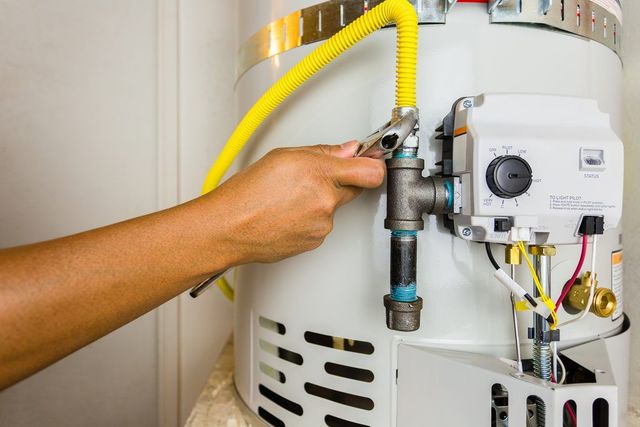Just about every person may have their unique assumption involving How to Maintain Your Water Heater & Prolong its Life.

Hot water is necessary for daily convenience, whether it's for a refreshing shower or cleaning meals. To ensure your warm water system runs efficiently and lasts much longer, normal maintenance is crucial. This article provides functional pointers and insights on exactly how to keep your home's hot water system to stay clear of interruptions and pricey repair work.
Intro
Keeping your home's hot water system could seem overwhelming, but with a couple of easy actions, you can ensure it runs smoothly for many years to find. This overview covers everything from comprehending your warm water system to do it yourself upkeep tips and understanding when to employ expert assistance.
Significance of Keeping Your Hot Water System
Routine upkeep not only prolongs the life-span of your hot water system but likewise guarantees it runs efficiently. Ignoring upkeep can lead to reduced efficiency, higher power bills, and even premature failing of the system.
Indications Your Warm Water System Requirements Maintenance
Understanding when your warm water system requires attention can protect against major problems. Keep an eye out for signs such as inconsistent water temperature, unusual sounds from the heating system, or rusty water.
Flushing the Water Heater
Purging your hot water heater removes sediment accumulation, improving efficiency and extending its life.
Checking and Changing Anode Rods
Anode poles protect against corrosion inside the container. Inspecting and replacing them when worn is essential.
Complicated Problems Needing Professional Assistance
Examples include major leaks, electrical problems, or if your hot water heater is constantly underperforming.
Regular Specialist Upkeep Perks
Specialist maintenance can consist of complete assessments, tune-ups, and guaranteeing compliance with safety and security standards.
Inspecting and Readjusting Temperature Settings
Adjusting the temperature level setups ensures optimal efficiency and safety and security.
Do It Yourself Tips for Maintenance
You can carry out several maintenance tasks yourself to keep your hot water system in leading problem.
Checking for Leakages
Regularly check pipelines and connections for leaks, as these can cause water damage and higher costs.
Understanding Your Warm Water System
Before diving right into upkeep jobs, it's useful to understand the fundamental components of your hot water system. Generally, this consists of the water heater itself, pipes, anode poles, and temperature controls.
Month-to-month Upkeep Tasks
Regular month-to-month checks can assist capture minor concerns before they intensify.
Testing Pressure Alleviation Valves
Evaluating the pressure safety valve ensures it operates correctly and protects against excessive stress buildup.
Protecting Pipelines
Protecting hot water pipes lowers heat loss and can conserve power.
When to Call a Professional
While do it yourself maintenance is valuable, some problems call for expert experience.
Conclusion
Routine upkeep of your home's hot water system is vital for performance, longevity, and expense financial savings. By following these suggestions and knowing when to look for professional assistance, you can guarantee a dependable supply of warm water without unexpected interruptions.
How to Maintain an Instant Hot Water Heater
Before tinkering with your hot water heater, make sure that it’s not powered on. You also have to turn off the main circuit breaker and shut off the main gas line to prevent accidents. Also turn off the water valves connected to your unit to prevent water from flowing into and out of the appliance. 2. When you’re done, you have to detach the purge valves’ caps. These look like the letter “T†and are situated on either side of the water valves. Doing so will release any pressure that has accumulated inside the valves while at the same time avoid hot water from shooting out and burning your skin. 3. When the purge valves’ caps are removed, you have to connect your hosing lines to the valves. Your unit should have come with three hoses but if it didn’t, you can purchase these things from any hardware or home repair shops. You can also get them from retail stores that sell water heating systems. Read the user’s manual and follow it to complete this task properly. When the hosing lines are connected, open the purge port’s valves. 4. You should never use harsh chemical cleaners or solutions when cleaning your unit. Make use of white vinegar instead. It should be undiluted and you’ll probably use about 2 gallons. 5. Now flush your water heater. This task should probably take about 40 minutes. We can’t give you specific directions for this because the procedure is carried out depending on the type, model and brand of your heater. With that being said, refer to the user’s manual. 6. When you’re done draining the unit, you have to turn off the purge port valves again. Remove the hosing lines that you earlier installed on each of the water valves. Put the valve caps (purge port) back in their respective places and be very careful so as not to damage the rubber discs that are found inside these caps. 7. Now that everything’s back in place, check your user’s manual again to find out how to reactivate your water heating system. 8. Once it is working, turn one of your hot water faucets on just to let air pass through the heater’s water supply pipes. Leave the tap on until water flows smoothly out of it. https://www.orrplumbing.com/blog/2014/september/how-to-maintain-an-instant-hot-water-heater/

As a passionate reader about Water Heater Maintenance Tips You Can't Afford to Forget, I think sharing that piece of content was worth the trouble. Sharing is caring. Helping others is fun. We thank you for your readership.
Instant Quote